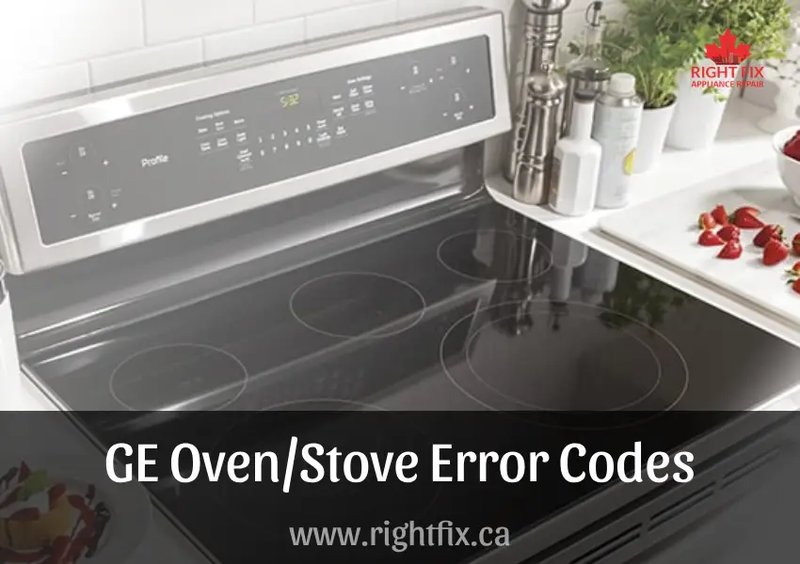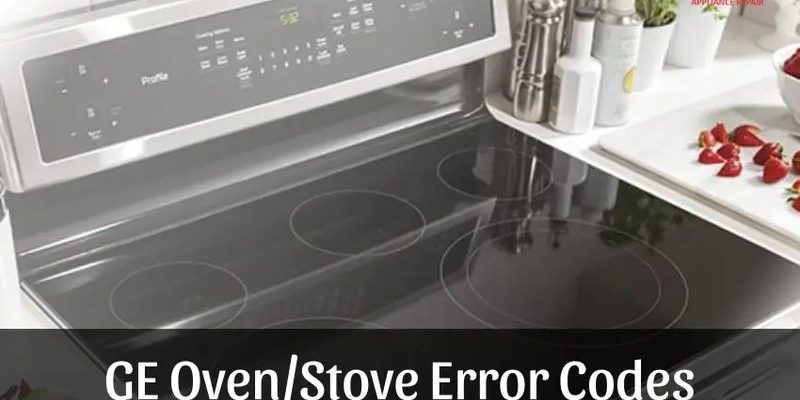
Understanding Error E2 on Your GE Oven & Range
This pesky error code can seem like a cryptic message, but it’s more straightforward than you might think. The E2 error usually points to a malfunction with the temperature sensor or a keypad issue. Picture your oven’s temperature sensor like a thermostat in your house — if it goes out of whack, the internal environment becomes unpredictable. Similarly, a faulty keypad is like having a stuck button on your television remote.
If your oven’s brain can’t trust its sensor or keypad readings, it can’t figure out how to maintain the correct temperature for cooking. This can lead to undercooked meals or, worse, safety hazards if things get too hot. The error acts as a safeguard, stopping the oven from continuing until it’s sure everything is functioning correctly. Ignoring this message might result in unreliable cooking results. So, just like you wouldn’t ignore a leaky faucet, this alert needs your attention.
Here’s the deal: some folks might experience this issue intermittently. It comes and goes, leading to the temptation to brush it off as a fluke. But remember, each occurrence is a reminder that something isn’t quite right. If left unsolved, the issue might catch up with you when your oven decides it’s had enough, potentially leading to more costly repairs or even a full appliance replacement.
Consequences of Ignoring the Error E2
What happens if you don’t address this error? Well, continuing to use your oven without fixing the E2 error can result in a few complications. For one, inconsistent cooking can become a daily nuisance. Imagine baking cookies that are burnt on the edges but raw in the center. Not exactly the tasty treat you had in mind, right?
Beyond culinary disappointments, there’s a more serious side. A faulty sensor can lead to overheating. In extreme cases, this might pose a fire hazard. Think of it like an overheated car engine — danger lurks when you least expect it. Plus, if the oven is constantly overheating, it could damage internal parts beyond the sensor, leading to expensive repairs.
Moreover, using an oven in a constant state of error can shorten its lifespan. Appliances are like investments, and neglecting maintenance or necessary fixes can lead to a quicker decline. You wouldn’t skip oil changes on your car, would you? Similarly, paying attention to these signals is a preventative measure that can save you time, money, and the stress of a broken oven.
Steps to Troubleshoot and Fix Error E2
Alright, so you’ve decided to tackle this issue head-on. What now? A good first step is to review the user manual. These guides often have specific troubleshooting steps designed for the exact model of your oven. Even if this seems as thrilling as reading a textbook, it’s a reliable starting point.
Next, try resetting the oven. This can sometimes clear minor electronic hiccups contributing to the error. It’s like restarting your computer to resolve glitches. Simply unplug the appliance for a few minutes then plug it back in. If the error persists, it’s a sign that further action is needed.
If DIY doesn’t do the trick, contacting a professional might be your best bet. An experienced technician can diagnose the issue more accurately and provide a fix. This route might involve replacing a sensor or repairing the keypad—the cost for which can vary but is often worth it to avoid bigger future expenses. Preventative steps include regular cleaning and checking connections, ensuring your appliance runs smoothly for years to come.
Preventative Tips and Final Thoughts
Here’s a little secret: a bit of maintenance here and there can keep your oven operating at its best. Regularly clean the oven’s interior to prevent buildup, which can interfere with sensors. Just like keeping a clear windshield aids your driving, a clean oven ensures it can “see” what it’s doing.
For those prone to procrastination, setting reminders for regular maintenance checks can be invaluable. Treat it like scheduling a dentist appointment. It might not seem urgent now, but it’s crucial for health — both yours and your oven’s! Periodically inspect the appliance’s condition or have a technician look it over annually to catch potential problems early.
In conclusion, while the E2 error might seem daunting, addressing it promptly can save you a lot of hassle down the road. By understanding what your oven is trying to communicate, you ensure it remains a reliable partner in your culinary adventures. After all, a happy oven means happier cooking and, ultimately, tastier meals.
